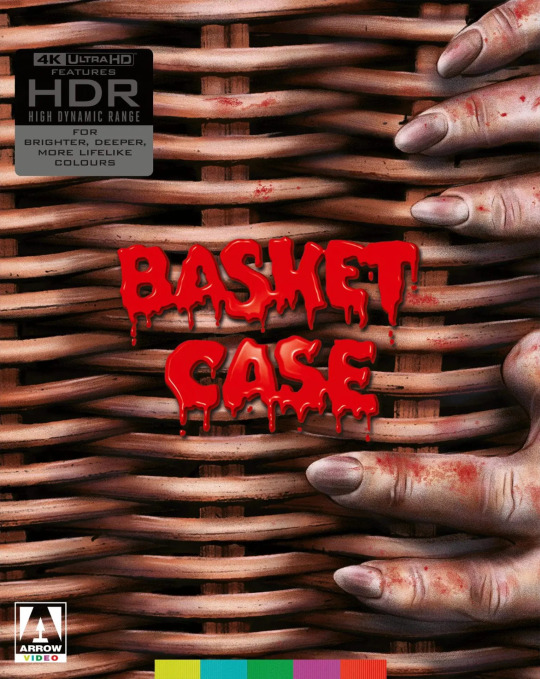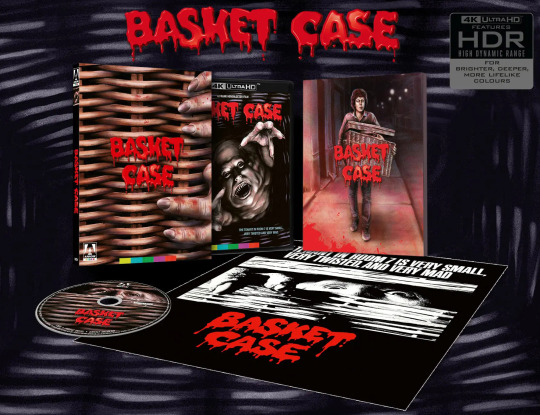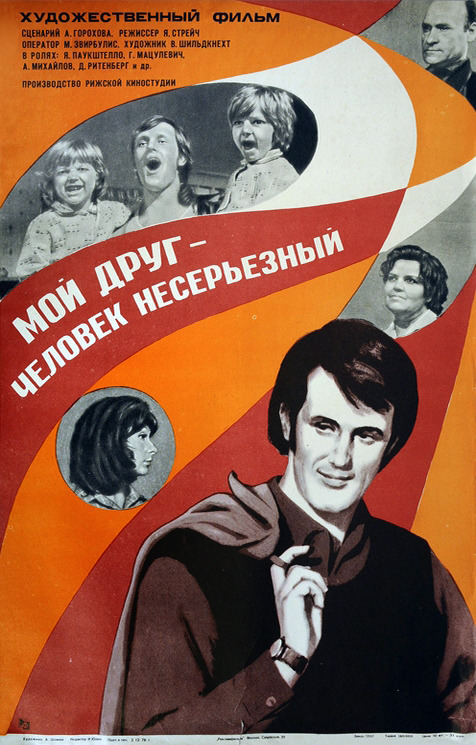#Latvian cinema
Explore tagged Tumblr posts
Text









200 notes
·
View notes
Text



Astrīda Kairiša in the movie "Pūt, vējiņi!"
27 notes
·
View notes
Text

#film#movie#motion picture#cinema#Latvian movie#Latvian film#Latvian motion picture#Latvian cinema#film adaptations#cinematic adaptations#historical drama#Latvian history#Latvian culture#Blizzard of Souls#The Rifleman#Dzintars Dreibergs#Boris Frumin#Aleksandrs Grins#Oto Brantevics#Greta Trusina#Martins Vilsons
11 notes
·
View notes
Text



















Vija Artmane as Julia Lambert in Theatre (1978)
#the theatre 1978#teatris 1978#vija artmane#julia lambert#soviet cinema#latvian cinema#costumes#the gifening (random movies edition)
15 notes
·
View notes
Text










Neon Spring (Matiss Kaza, 2022)
#Marija Luize Melke#matiss kaza#neon spring#Neona pavasaris#latvian cinema#latvia#riga#lgbt characters#lgbt#female screenwriters#greta trusina
10 notes
·
View notes
Text
Flow [Straume] (2024)

This is why going to movies is so special. Potent storytelling distilled down to nothing but the essential, yet still providing a sumptuous, rich experience. Flow follows a motley crew of animals onboard a boat as they navigate a strange, watery world. It’s a post-human world, hints of their existence at some earlier point present in art and architecture, but there is no more civilization. That civilization, when it did exist, isn’t a one-to-one with our own, a space more evoking the video game “Myst” or perhaps a Tibetan Buddhist monastery. What’s more, this world is fraught with danger, ever flooding and storm-washed. Water advances and recedes, the land inundated by waves or falling away into bottomless chasms. The camera roves freely about the space, athletic and dynamic as it follows our subjects exploring this world full of wonder and adventure and danger. There is no real sense of a goal or direction, and the constant flux of the environment seems to suggest that there will never be true respite, only just brief moments of peace. But after making it through trials and tribulations, storms and aquatic perils, our band have grown together and are steadfast companions through and through. They’ll look out for one another.
What really anchors Flow are its central cast of animals. Instantly lovable and relatable, they are all wonderfully emotive and call to mind our own experiences with animals both familiar and exotic. The cat cannot abide by the more exuberant golden retriever, quick to voice its disapproval with a growl or a swat, but a spinning top or a spot of sunlight reflected off a mirror is enough to bring out the predatory focus. The lemur is vain and a bit of a hoarder, and the capybara is unbothered by everything but always keeps an eye out for the others. A gallant secretary bird proves to be an excellent navigator, and the aforementioned dog just wants to be everyone’s friend. They might have their tiffs, but this journey brings them together.
As with the diluvian landscape, there is a sort of elegiac feel to this film in a bravura moment of magic, the secretary bird ascending into a brilliant cataract of light atop a mountain, a sort of passing onto the next world. In the close, a monstrous leviathan who has incidentally scared and aided the crew at points is beached by the receding waters. Initially frightening, it is revealed to be wonderful in its own right, breaching the water over the sailboat. And here in the end, unable to move its bulk, the leviathan is more worthy of pity and comfort than fear or hatred. The cat moves to console it before being joined by its friends, the group regarding themselves reflected in a puddle of the water defines their world.
THE RULES
SIP
The cat is annoyed by something.
Someone goes overboard into the water.
A new flood surge begins.
BIG DRINK
A new companion joins the group.
The group interacts with a pack of outsiders.
#drinking games#flow#gints zilbalodis#animation#drama#comedy#fantasy#sci fi & fantasy#latvian cinema
1 note
·
View note
Text

Flow (dir. Gints Zilbalodis) x VIFF 2024.
Latvia's wordless animated fantasy follows a black cat escaping destruction alongside other animals on a raft after a flood and unseen disappearance of all human life. Rendered through what resembles PlayStation 2-era visual graphics technology, the intentionally less detailed or complex animation style only enhances the naturalistic journey of animal survival at sea. It's a deceptively simple film full of splendour and majesty.
Screening at the 2024 Vancouver International Film Festival as part of the Showcase series at SFU Woodward's on Oct. 5 and the Vancouver Playhouse on Oct. 6.
Also screening at the VIFF Centre from Nov. 29–Dec. 11 & Jan. 11–18 and Rio Theatre from Jan. 6–11.
#flow#flow movie#reviews#viff#viff 2024#animation#events#animated#cartoon#latvia#latvian#gints zilbalodis#black cat#movie review#film review#movies#tiff#tiff 2024#movie#film#cinema#flow 2024#matīss kaža#matiss kaza
137 notes
·
View notes
Text

18 December 2024
Film: FLOW (dir. Gints Zilbalodis, 2024, Latvia-France-Belgium)
Forum: AMC NewCity Format: DCP
Observations: This is likely to be my last movie at the theater in 2024. The production team created the visuals for this feature entirely with an open-source software tool (Blender). While the images and movement do not quite escape the look (and flatness) of a video game, they were able to keep the budget down to about $4MM. Compared to the vast sums and long lead-times of big studio animated features, therefore, we can expect to see more of these arriving sooner in the theaters and via streaming.
1 note
·
View note
Text

Basket Case will be released on 4K Ultra HD on April 30 via Arrow Video. Sara Deck designed the cover art for the 1982 horror film; the original poster is on the reverse side.
Frank Henenlotter (Frankenhooker, Brain Damage) writes and directs. Kevin Van Hentenryck, Terri Susan Smith, and Beverly Bonner star.
The limited edition set comes with a double-sided fold-out poster and a booklet with writing on the film by Michael Gingold and a Basket Case comic strip by Martin Trafford, all housed in a slipcase.
Basket Case has been restored in 4K from the original 16mm negative by MoMA with Dolby Vision (HDR10 compatible) and original uncompressed PCM mono audio. Special features are listed below, where you can also see the full packaging.

Special features:
Audio commentary by writer/director Frank Henenlotter and actor Kevin VanHentenryck
Audio commentary by writer/director Frank Henenlotter, producer Edgar Ievins, actor Beverly Bonner, and filmmaker Scooter McRae
Basket Case 3-1/2: An Interview with Duane Bradley – Short film by Frank Henenlotter
Interview with writer/director Frank Henenlotter
Interview with actor Kevin VanHentenryck
Interview with actors Florence and Maryellen Schultz
Interview with actor Beverly Bonner
The Latvian Connection – Interviews with producer Edgar Ievins, casting person Ilze Balodis, special effects artist Ugis Nigals, and Belial performer Kika Nigals
Interview with film critic Joe Bob Briggs
Basket Case at MoMA – Footage from the 2017 restoration premiere
What’s in the Basket? – 2012 feature-length documentary on the Basket Case franchise
In Search of the Hotel Broslin – location featurette
The Frisson of Fission: Basket Case, Conjoined Twins, and ‘Freaks’ in Cinema – video essay by Travis Crawford
Basket Case outtakes
Belial’s Dream - 2017 animated short directed by Robert Morgan
Slash of the Knife - 1976 short film directed by Frank Henenlotter with optional commentary by Henenlotter and playwright Mike Bencivenga
Slash of the Knife outtakes
Extensive image galleries
Trailers, TV spots, & radio spots
Also included:
Double-sided fold-out poster
Booklet with writing on the film by Michael Gingold and a Basket Case comic strip by Martin Trafford
Slipcase
Duane Bradley seems like a pretty ordinary guy. His formerly conjoined twin Belial, on the other hand, is a deformed creature who lives in a wicker basket. Arriving in the Big Apple and taking up a room at a seedy hotel, the pair set about hunting down and butchering the surgeons responsible for their separation.
Pre-order Basket Case.
#basket case#horror#80s horror#1980s horror#frank henenlotter#arrow video#dvd#gift#80s movies#1980s movies#cult classic#sara deck#joe bob briggs#horror comedy#exploitation
22 notes
·
View notes
Note
do you happen to know any good resources for learning/not forgetting latvian? always nice to see another one of us about!
O, labdien!
I don't know how big of a help I will be, because I live in Latvia and I've never really needed any resources to get to the language, but personally I think that the best way to stay in touch with a language is by using it, talking, writing, reading books in it, watching movies, listening to songs!
Spotify has a lot of music and podcasts in Latvian, as well as youtube. There are also some of the oldies but goodies of Latvian cinema on youtube, such as Emīla nedarbi, Limuzīns Jāņu nakts krāsā, Četri balti krekli (Elpojiet dziļi) and others. Those of course are a bit old in their lexicon and the quality is also so-so, but they are classics at least! 😄
If you're in Latvia or can trick your internet connection to think you're in Latvia, Nacionālais kino centrs website filmas.lv have hundreds of Latvian movies you can watch for free!
I don't know where you can get Latvian books if you don't have a Latvian library card, but on Letonika.lv under the subsection "Lasītava" there are some books by Latvian grands available for free. They also have a cool audio section where you can listen to the audio book and follow the written text on the screen. Great for learning, I think!
For learning resources I think it's worth to visit Latviešu valodas aģentūras website valoda.lv but I don't know how accessible their resources are!
But anyway, I hope this helps somehow and you find something fun!
Lai veicas!!!!
4 notes
·
View notes
Text


121 notes
·
View notes
Text

Another Latvian movie available for free, yay! :D "Mans draugs — nenopietns cilvēks" or "My friend is unserious person". Although the plot itself is happening in soviet times, I like how it subtly lets the viewer know that soviet culture is completely alien and invasive here, as well as the russian language, which despite its widespread, is being spoken as a foreign one. Irony over the regime, a humorous attitude towards hard conditions, bureaucracy and corruption, and a bright slice of life.
...oh jeez, who am I kidding? I watched it because the main character is hot, has tantalizing voice (in Latvian, I mean) and beautiful legs. And backside. 😁
#Imagine if Віталька was actually hot - that's it. That's the movie#Latvia#Latvian cinema#Movies#cinematography#vintage cinema
5 notes
·
View notes
Text

youtube
#movie#film#cinema#Latvian movie#Latvian film#Latvian cinema#The Chronicles of Melanie#Viestur Kairish#Viesturs Kairišs#deportation#Latvian history#drama film#based on a true story#based on true events#Youtube#movie poster#film poster#movie trailer#film trailer#Siberia#foreign film#international film
5 notes
·
View notes
Text
SIDESHOW CINEMA
- Asian
- German
- BULGARIAN
- American
- French
- Spanish
- Macedonian
- Finnish
- Swiss
- LATVIAN
- English
- ROMANIAN
- ESTONIAN
- SLOVAK
- Dutch
- Indonesian
- Scottish
- Americans
- IRISH
- ITALIAN
- European
- British
- Swedish
- English/American
- Bosnian
- HUNGARIAN
- Germans
- Norwegian
- Serbian
- ICELANDIC
- Lithuanian
- Greek
- PORTUGUESE
- Croatians
0 notes
Text
aboutta fulfill my civic duty as a latvian and going to watch Flow in the cinema. ohhh im so excited
0 notes
Text
Museum Night: Cinema Museum 17

Originally Uploaded on DeviantArt as WinxPossible on May 31, 2018
-----
Original Description:
An old Latvian movie was being played…not that you can really see…
-----
No comment.
#Latvia#Riga#Spring#Museums#Museum Night#Photo#Spiders Scribbles#Snapshots#2018 Museum Night Showroom
0 notes